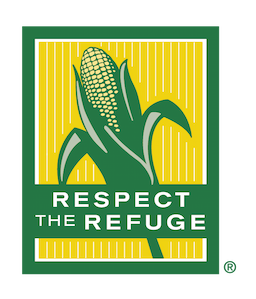How to Tackle Waterhemp
October 20, 2016

The first true leaves of the waterhemp plant appear generally longer and more spear-shaped than other pigweeds.
The first step is to verify you’re actually dealing with waterhemp. Although a member of the pigweed family – along with Palmer amaranth and redroot pigweed – waterhemp features several characteristics that differentiate it from other pigweed varieties. In the waterhemp seedling stages, look for the following features:
- First true leaves appear generally longer and more spear-shaped than other pigweeds.
- Seedlings are hairless and have leaves that look waxy or glossy.
- When rubbed between the fingers, mature flowers reveal the small, shiny, black seeds found only on female plants.

Potential Damage and Economic Impact
In the past, agronomists advised farmers to control waterhemp through visual scouting and considering the economic threshold (dollars spent versus dollars returned) for treatment. The economic threshold recommendation is no longer enough.
“In today’s environment, there’s no such thing as an economic threshold for control of resistant weeds,” says Dr. Reid Smeda, University of Missouri weed scientist. “Zero tolerance for adding weed seed to the soil should be every farmer’s goal.”
According to the Purdue University Extension, in soybeans, 20 waterhemp plants per square foot can reduce yield by 44 percent.
Purdue Extension also found a similar impact on corn yield. Early season competition from a heavy waterhemp infestation (more than 30 plants per square foot by the time they are 6 inches tall) can reduce corn yield by 15 percent.
Manage Tough-to-control and Resistant Waterhemp
Proliferation of resistant waterhemp can be managed by accurate weed identification and regular scouting. Scout early and often. Control waterhemp before it reaches 4 inches in height to achieve timely and effective herbicide application. Waterhemp can grow at the incredible rate of 1 to 1 1/4 inches per day, so timely herbicide application is critical.
For best control, apply a pre-emergence residual herbicide followed by post-emergence applications as needed throughout the growing season. Treating new infestations early reduces waterhemp establishment, prevents seed production and greatly improves control. Other control practices farmers may use include crop rotation, planting cover crops and using diversified weed management programs. Farmers should always use full, labeled rates and herbicides with multiple sites of action from different classes of chemistry.
Known Resistance in Waterhemp
In Illinois, Iowa, Missouri and other areas across the Corn Belt, there is documented waterhemp resistance to ALS inhibitors (Group 2), PPO inhibitors (Group 14), glyphosate (Group 9), triazines (Group 5) and HPPD inhibitors (Group 27). There has also been 2,4-D (Group 4) resistance in waterhemp documented in a native-grass seed production field in Nebraska, according to the Weed Science Society of America (WSSA). For further information on resistance confirmed by state, visit the International Survey of Herbicide Resistant Weeds.
Bayer Solutions
Bayer has a broad herbicide portfolio to combat tough-to-control and resistant weeds. A well-thought-out herbicide program, using multiple sites of action, should be implemented to sustainably manage weeds. Before applying any herbicide, please read the entire label for the best possible results and to confirm that the product is effective on the weeds you wish to control. Not every product is suitable for every situation, and use of the correct application technique will ensure the best results.
Please visit our corn and soybean pages for information on a portfolio of products from Bayer to help you better manage weeds.






